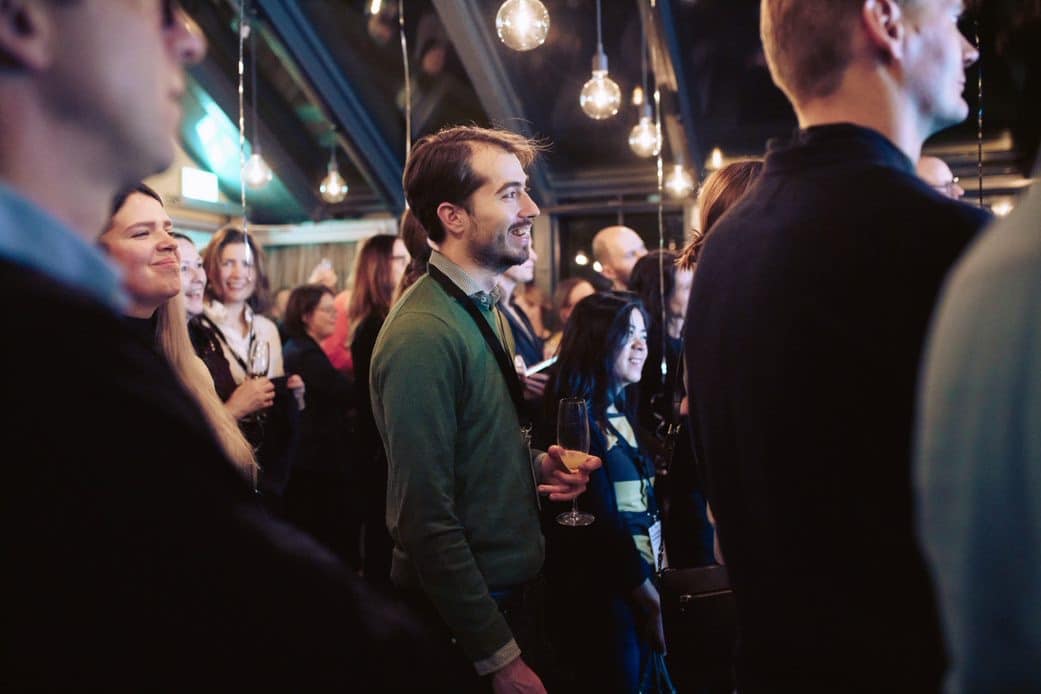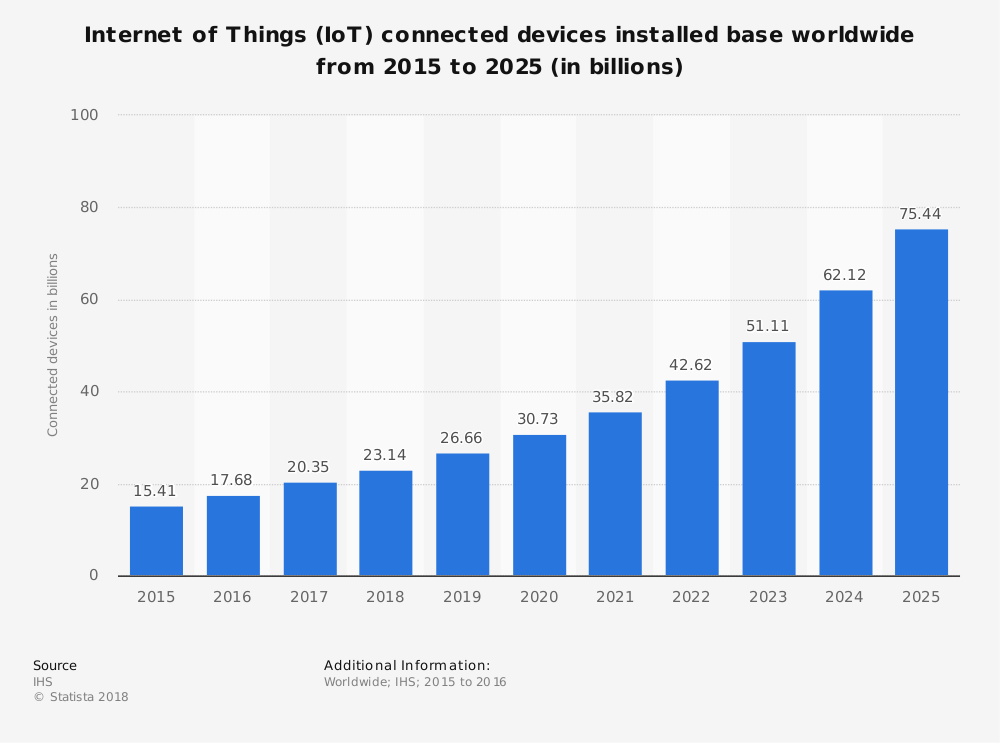Digital trend spotting 2019
We asked the question: “Which are the five key trends in digitalization for 2019?” With over 400 people on the waiting list and 75 guests at two after-work events, it seems people really want to know what trends to expect in the coming year and onwards. Here is a quick recap of our event “Digital Trend Spotting 2019” and the five key trends we’ve spotted.
Trend #1: Digital innovations will provide a more customer-centric experience for healthcare patients We live longer than ever before, yet, at the same time, lifestyle diseases and conditions account for 71% of all deaths. As a result, healthcare costs are growing faster than GDP in many countries. But what is it like to suffer from them and how can we best treat them? Virtual Reality is being used to help doctors experience what it’s like to suffer from certain medical conditions. Rather than relying on medical books and journals, doctors can now use VR headsets to get an understanding of how somebody with cataracts, for instance, sees the world. On the treatment side we are moving towards preventive rather than reactive healthcare. The Internet of Medical Things has a large part to play in this, whereby people’s individual lifestyles can be tracked – with apps, activity trackers and the like – and they can be pushed to change their habits with tailored programmes. One example of this from healthcare insurance is Länsförsäkringar, which is developing digital tools to help people change their sedentary lifestyle.

Trend #2: AI and humans are going to work more closely together as augmented intelligence grows In 2018 a Gartner survey found that 77% of companies yet to launch an AI initiative believed AI would lead to job losses. However, in companies whose employees have adopted AI only 16% have witnessed job losses, while 26% had seen job increases. Computers think like computers and humans think like humans. When you put the two together you get the best of both worlds. Moving forward we will see humans and AI collaborating, rather than AI simply replacing jobs – as many have predicted – as augmented intelligence becomes more common. For a doctor this could be a computer helping him or her to diagnose a patient. In policing it may be AI predicting where and when crimes will occur. This will also lead to smarter AI. It won’t just be able to tell us what but also why. In the example with the doctor it will explain why it believes somebody has cancer rather than just telling us that they have it – which should lead to better treatments.
Trend #3: Social values will guide brands and force political parties to rethink Trust in brands and governments is declining – according the Edelman Trust Barometer¹, of 33,000 people polled globally 57% said they would avoid a brand over their stand on social values. Those brands that lead the way on social values are not only performing better they are also forcing other brands to act. Microsoft, for instance, demands that its suppliers in the US follow their HR policy and give their employees three months parental leave. Within politics, people have become so disenchanted with their options that new parties are being formed. In Spain, the country’s third largest political party, Podemos (We Can), was started in 2014 as a populist movement to combat unemployment, inequality and corruption in the after mouth of the European debt crisis. Five months after its conception Podemos received 8% of the national vote for the European Parliament elections. But what does this mean? People are hungry for change and will support those with the right values.
Trend #4: Demand for companies to embrace the circular economy will be driven by customers It’s no secret that the climate is in bad shape and that we have to act – collectively and individually – to save it. We can’t rely on politicians to drive change. It is businesses leaders that will drive change, and they will do so because customers will demand it. Key to this will be embracing the circular economy – whereby we recover, repair, reuse, rent and recycle. Companies that do this will not only survive, but also thrive, but to do this they have to see circular as a business opportunity rather than a threat. Embracing the circular economy also means embracing digital as the two are intertwined. Digital provides the sharing platforms, inventory tracking, etc., that enables us to reuse and upcycle. Patagonia, a pioneer within the circular economy has an entire business/communications strategy built around repairing and reusing, as told by customers. 
Trend #5: We will disconnect but we are more connected than ever before People are beginning to realise that they are being nudged (or manipulated) on social platforms to act in certain ways. There’s a movement to disconnect, yet at the same time more and more things are being connected. We have smart homes, drive smart cars and live in smart cities. With 5G the possibilities for a connected infrastructure grow exponentially – from 17 to an expected 75 billion by 2025².  We’re at a point where we can’t live with it and can’t live without it. We want an Alexa, but don’t want it to hear everything we say. We want an app, but don’t want to share our data with the provider. Our data is valuable and things like GDPR are helping to protect it, but this only goes so far. The networks will continue to grow, the connections will increase, and as we can’t disconnect, we will see more people adopting “data blockers” as we take privacy into our own hands. Project fungus is just one way that people are ensuring they can’t be spied on through tech. ¹ www.edelman.com/earned-brand ² www.statista.com, 11/16
We’re at a point where we can’t live with it and can’t live without it. We want an Alexa, but don’t want it to hear everything we say. We want an app, but don’t want to share our data with the provider. Our data is valuable and things like GDPR are helping to protect it, but this only goes so far. The networks will continue to grow, the connections will increase, and as we can’t disconnect, we will see more people adopting “data blockers” as we take privacy into our own hands. Project fungus is just one way that people are ensuring they can’t be spied on through tech. ¹ www.edelman.com/earned-brand ² www.statista.com, 11/16